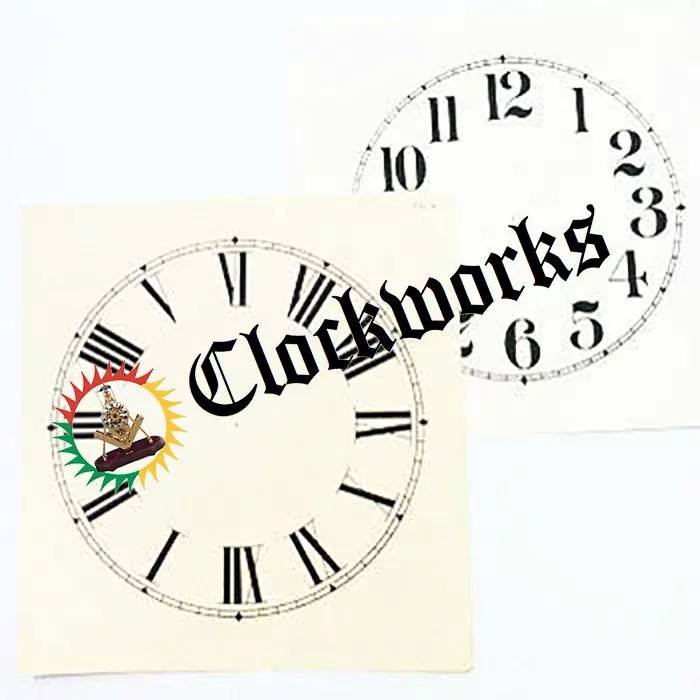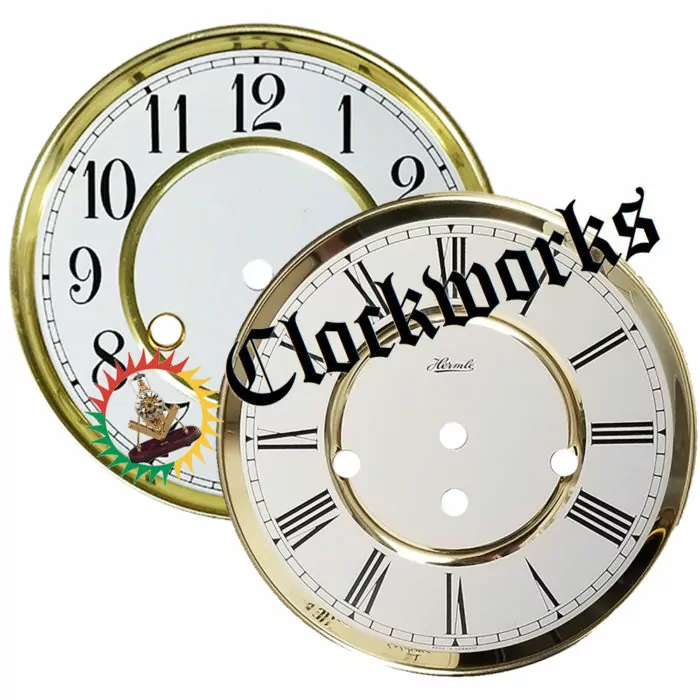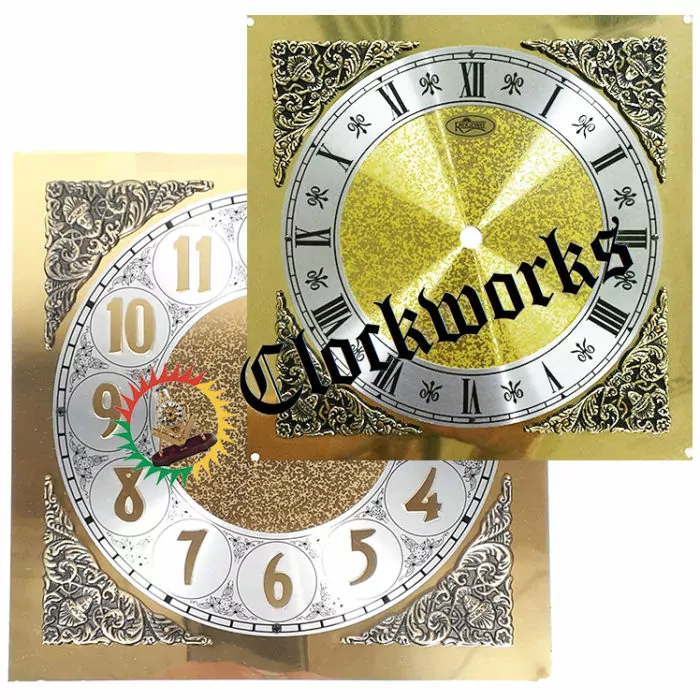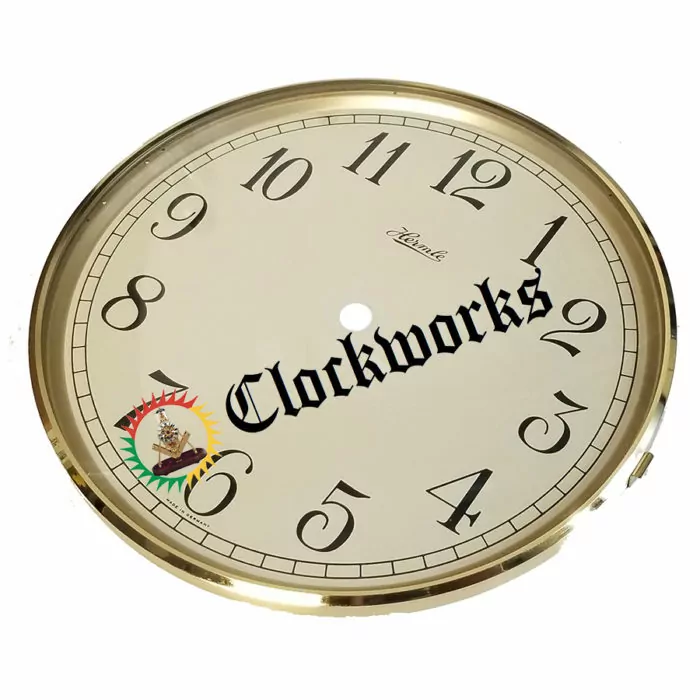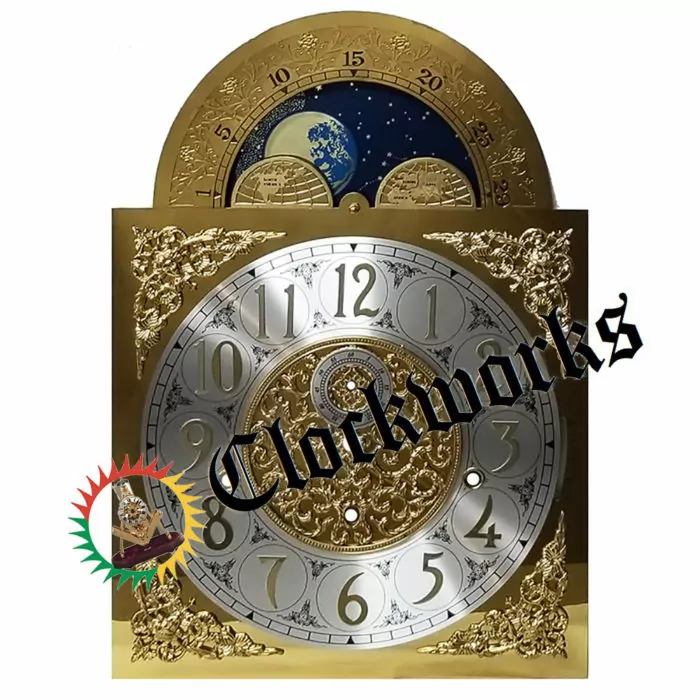Clock Dial Description of Styles
Clock Dial Description of Styles
When creating clocks it is a good idea to know all the options for the dial before deciding what clock to build.
The dial is both the most important thing and also the most tricky at times when building a clock.
It is most important because that is what people look at all day long. The dial makes or breaks the clock appearance. It is tricky because often what a customer wants for a project is no longer available. However the reverse is what needs to happen.
Choices are from what is currently available and not so much what a customer really wants. This availability depends on the clock. For example, a floor clock has more dial options than a school house clock. The list below are the general types of dials available.
Paper Clock dial Description
The paper dials come square but have a round time track.
It can be left as a square or it can be cut into a circle for a round dial application.
Use spray glue to stick the paper stock dial onto a thin board or metal backing. These are quite versatile for a variety of clock types.
Because they come in so many sizes and also available in ivory or white, paper dials are a popular choice. If you need an exact size or an off size that is unavailable, these are a great solution.
Click on the picture to shop Clock Paper Dials on Clockworks.com
Round clock dial Description
The round metal dials may come with a protective plastic coating.
Sometimes it is hard to tell it is there so if the dial seems to have scratches, it most likely has this coating. This needs to be taken off for the final clock project.
Made of thin metal, it is possible to drill these out with holes for a clock key if working with a spring driven clock. Use dial key hole grommets to make the holes pretty after the drilling is done.
Click on the picture to shop Round Metal Clock Dials on Clockworks.com
Square clock dials
You can drill Square dials for the winding of a spring driven clock.
Drill 3/8 holes where the key will go through the dial to wind the clock. Key hole grommets make the holes look good when done.
Click on the picture to shop Key Hole Grommets on Clockworks.com
Usually the metal dials are made from thin metal, and the size and color elections are few. If the size is not available in metal, please consider paper dials instead. These come in many sizes, and are available in white or ivory color, and Roman or Arabic numerals.
Click on the picture to shop Square Metal Clock Dials on Clockworks.com
Dial with Bezels
A dial and bezel combination is the hardest one to come up with by far. The usual intent is creating an antique mantle clock.
This is usually quite frustrating due to lack of availability. To find a dial / glass / bezel / dial pan combination in the right size, with a hinge, in a specific design is not easy.
In fact, it is probably impossible. The best thing to do is to choose any other clock style to make. Best to stay clear of mantle clocks that would require this dial style.
Click on the picture to shop Dial/Bezel/Glass Combos on Clockworks.com
Phase of the Moon
The clock moon dials are for floor clocks usually. The standard size is 11 x 15 1/2 inches.
So the base of the dial is 11" square and then add a 4 1/2 inch hump on the top for the lunar disk. There are a few other sizes, however this size is the industry standard for the most part.
This is a good thing because if your building a clock from kit plans, the odds are very good this dial is the size that they recommend using. For example, the likelihood of obtaining a dial that will be perfect for the project is much higher than trying to build a mantle clock.
Click on the picture to shop Clock Moon Dials on Clockworks.com
Updated on: 13/11/2025
Thank you!

